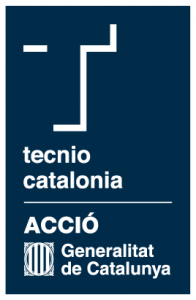Research Project
RollBot: Motion planning and control of underactuated nonholonomic robots
Type
National Project
Start Date
01/09/2025
End Date
31/08/2028
Project Code
PID2024-161798NB-I00

Staff
-
-
Franch, Jaume
Principal Investigator
-
Thomas, Federico
Researcher
-
Ros, Lluís
Researcher
-
Ruiz de Angulo, Vicente
Researcher
-
Perez, Alba
Researcher
Project Description
Project PID2024-161798NB-I00 funded by MCIN/ AEI /10.13039/501100011033 and by ERDF, UE
Motion planning remains one of the most challenging problems in robotics. The complexity of this problem arises from the different constraints that must be simultaneously considered. To ensure feasibility, the trajectory of a robot should fulfill all kinematic constraints of the system including holonomic ones (like loop-closure or end-effector constraints) or nonholonomic ones (like rolling contact or velocity limit constraints), be compliant with the equations of motion of the robot, avoid the collisions with obstacles in the environment, and be executable with the limited force capacity of the actuators.
In a series of previous national research projects (Cuik++ 2011-2014, RobCab 2015-2018, Kinodyn 2018-2021, and Kinodyn+ 2021-2025), the proposing team successfully developed novel motion planning methods able to consider kinematic and dynamic constraints for fully actuated robots. In this project, we propose to focus on the development of planning and control methods for non-holonomic underactuated systems. Underactuation opens the possibility to attain full mobility reducing the number of actuators, which can significantly decrease the weight and the cost of the robots. However, the control of underactuated systems is challenging, especially if the system includes non-holonomic constraints, which appear frequently in practice (consider, for instance, the case of car-like robots).
The departing hypothesis of this project is that the class of differentially flat non-holonomic systems is significantly larger that what is currently assumed in the literature. The key point is that the planning and control of trajectories are particularly simple in differentially flat systems. To evaluate our hypothesis, we will focus first in the case of spherical robots, although we expect the results of this project to be applicable to a larger family of nonholonomic systems. Spherical robot are a special kind of mobile robot consisting of a driving mechanism placed inside a spherical shell. Such robots have several advantages (they can easily recover from collisions, they can move on harsh terrains and even on water, etc). Their main limitation is the lack of sensors to perceive the environment. In this project, we propose to build a small mobile spherical robot with a under-actuated motion system. The idea is that, by reducing the complexity of the driving system (at the expense of increasing the complexity of the control) the robot should be able to carry additional sensors (inertial sensors, cameras etc), which will be leveraged to improve its location and navigation abilities. Therefore, the general objective of this project is to develop efficient methods for the planning, control, and localization of non-holonomic underactuated robots. Such methods will be tested on an spherical robot to be designed and build in this project. The achievement of this general objective requires to address the following specific objectives:
- Significantly extend the class of non-holonomic systems that are known to be differentially flat;
- Develop a control and planning methods for non-holonomic underactuated systems based on this property
- Design and build a small spherical robot with an underactuated driving system and with several sensors, at least an IMU and a ToF camera
- Develop particularly efficient location methods relying on such sensors
- Validate the whole development in a real scenario.



Follow us!